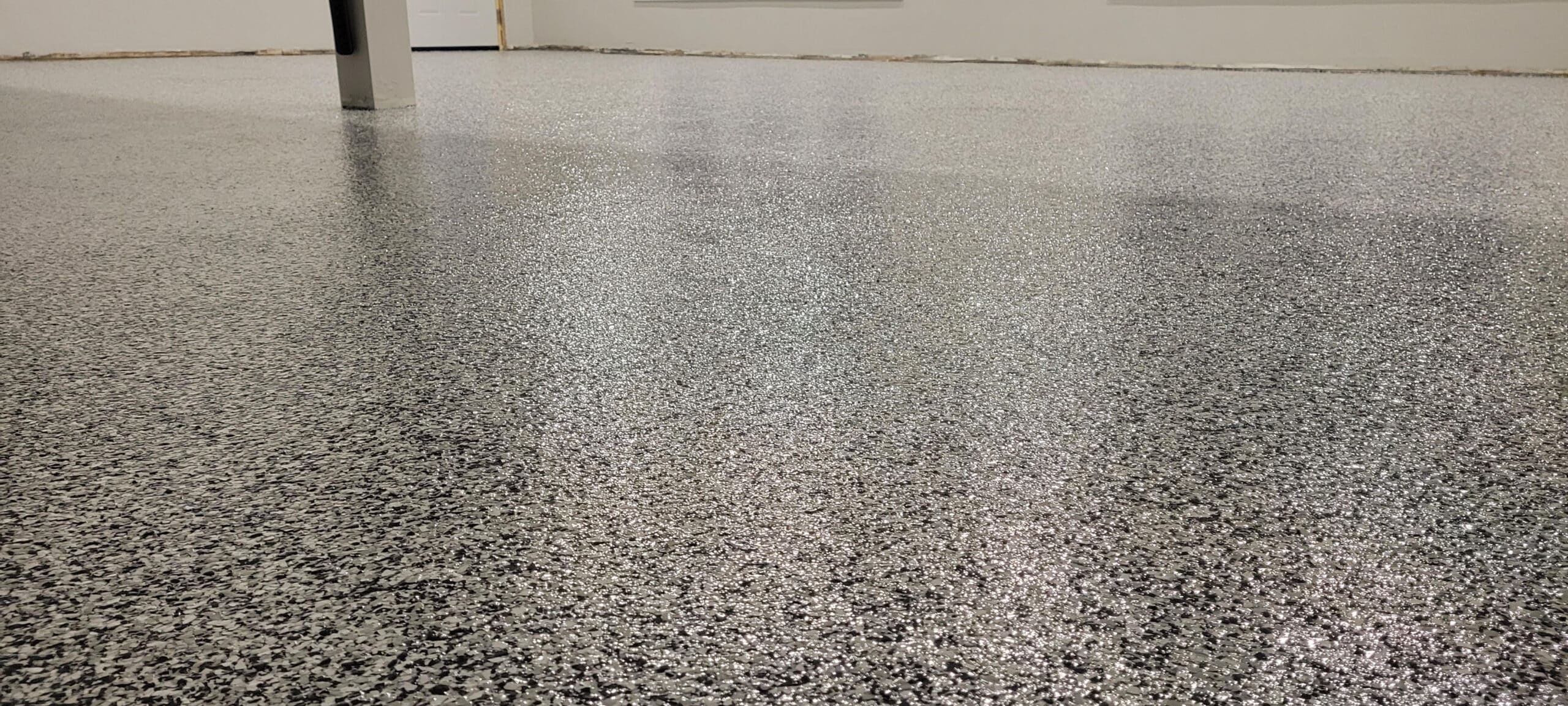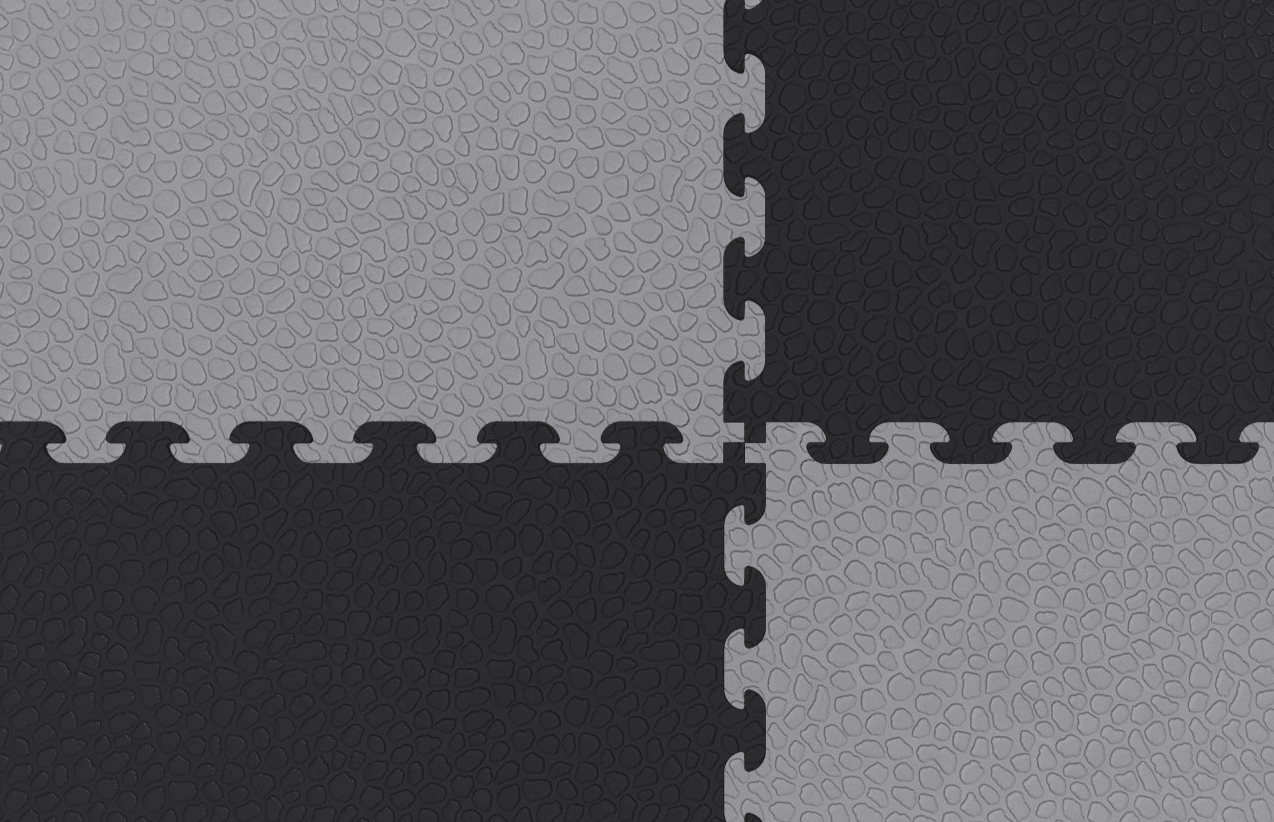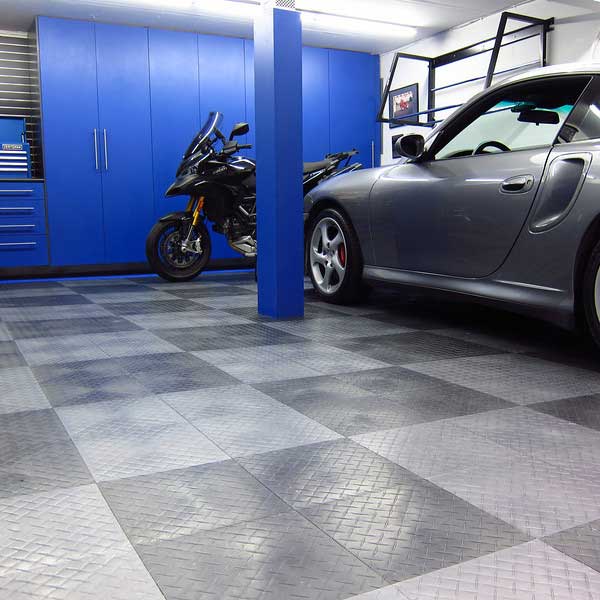You chose polyurea coating for your garage floor for a reason: its incredible durability, rapid cure, and superior resistance. It’s an investment in a truly high-performance surface. But even the toughest floors benefit from smart care. While polyurea requires less babying than some other options, understanding its unique properties and how to properly maintain it will ensure its flawless appearance and extended lifespan.
Why Polyurea Stands Up, and How to Help It Stay That Way:
Polyurea’s strength comes from its flexibility and extremely tight molecular bond, making it exceptionally resistant to:
- Abrasion: It can withstand scuffs and scrapes from daily traffic, tools, and tires better than most.
- Impacts: It’s less prone to chipping and cracking from dropped items.
- Chemicals: It shrugs off common garage spills like oil, gas, and road salts.
- UV Light: Unlike some epoxies, polyurea resists yellowing and fading from sun exposure.
Your maintenance routine aims to capitalize on these strengths and prevent the buildup of materials that could eventually compromise its pristine look.
Daily & Weekly Habits: Simple Steps for a Shining Floor
The key to polyurea maintenance is consistency, and thankfully, it’s straightforward:
- Sweep or Vacuum Regularly: This is your primary defense. Grit, dirt, and sand are abrasive. Using a soft-bristle broom or a shop vacuum with a soft brush attachment will quickly remove these culprits before they can be ground into the surface by tires or foot traffic. Make this a quick, frequent habit.
- Act Fast on Spills: While polyurea is remarkably resistant, don’t let liquids sit.
- Automotive Fluids (Oil, Antifreeze, Gas): Blot immediately with paper towels or a clean rag. For any residue, follow up with a mild cleaning solution.
- Harsh Chemicals (Battery Acid, Solvents): Wipe these up instantly with appropriate safety gear (gloves, eye protection). Even though polyurea is highly resistant, immediate removal is always the best practice. Rinse the area thoroughly with water after cleanup.
- Mud/Dirt: Allow wet mud to dry completely, then simply sweep or vacuum it away.
Deeper Cleaning: Restoring the Luster
When regular sweeping isn’t enough, it’s time for a wet clean:
- Choose the Right Cleaner: Polyurea is easy to clean. A solution of warm water mixed with a neutral, pH-balanced cleaner is usually all you need. Common household options like Dawn dish soap or a diluted solution of Simple Green work exceptionally well for general grime and automotive residues. Avoid anything acidic, citrus-based, or overly harsh.
- Mop Methodically: Use a clean microfiber mop or a soft deck brush. Work in sections, applying the solution evenly. For areas with tougher caked-on dirt, let the solution sit for a few minutes to loosen the grime, but never let it dry on the floor.
- Target Stubborn Stains: For persistent marks that won’t budge with regular cleaning, a diluted TSP (Trisodium Phosphate) cleaner can be very effective. Mix according to the package directions, apply to the stain, and gently scrub with a non-abrasive scrub pad (a white or red nylon pad is ideal).
- Rinse Thoroughly: After cleaning, rinse the entire floor with clean water. This is crucial to remove all cleaning solution residue, which can leave a film or attract dirt. You can use a clean mop or a squeegee to push rinse water towards a drain or out of the garage.
- Allow to Dry: Let the floor air dry, or use a squeegee to expedite the process and prevent water spots, especially if you have hard water.
Protect Your Investment: What to Avoid
- Abrasive Scrubber Pads or Brushes: Never use steel wool, abrasive powders, or stiff wire brushes. These can scratch and dull the polyurea’s finish. Stick to soft nylon bristles or non-abrasive pads.
- Harsh Chemicals (for prolonged contact): While polyurea is highly chemical resistant, strong acids (like muriatic acid) or aggressive solvents should not be left to dwell on the surface for extended periods. Clean them up immediately.
- Oil-Based Cleaners or Waxes: These can leave a greasy residue, make the floor slippery, and actually attract more dirt.
- Steam Cleaners: The high heat can potentially compromise the coating’s bond or finish.
Proactive Protection: Beyond Cleaning
Extend your polyurea floor’s life and beauty even further with these simple habits:
- Walk-Off Mats: Place mats at all garage entry points to trap dirt, debris, and moisture from shoes and tires before they get tracked onto your coated floor.
- Containment Mats: For parking vehicles, especially in winter or if you have vehicles prone to drips, a garage containment mat is an excellent addition. It catches melting snow, road salts, oil, and other fluids, keeping them off your primary polyurea surface.
- Protect from Extreme Point Loads: While incredibly tough, avoid dragging extremely heavy or sharp metal objects directly across the floor. Use plywood, cardboard, or rubber pads under items like jack stands, car lifts, or engine hoists if they will be sitting for extended periods or moved frequently.
By integrating these best practices into your routine, your polyurea garage floor will remain a testament to durability and a source of pride for many years. At Garage Flooring LLC, we’re committed to helping you maintain that showroom shine!
Ready to keep your polyurea garage floor looking its best?




